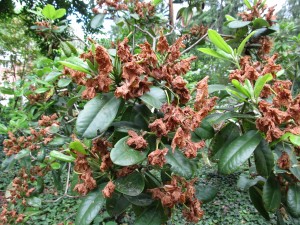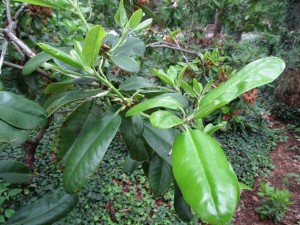Large-flowered rhododendrons (Rhododendron catawbiense) benefit from “deadheading”, the practice of removing the old spent flower heads. Deadheading encourages increased branching, which frequently results in more blooms the following spring. It also cleans up their scruffy appearance. Small-flowered types (including ‘PJM’, lepidote rhododendrons, and azaleas) do not benefit from deadheading and are mostly self-cleaning.
Deadhead your rhododendrons within three weeks after flowering. Vegetative buds have yet to emerge. Later, when the new soft vegetative shoots are emerging, they’re easily damaged. Deadhead early in the day when plants are fully turgid and not wilted. Deadheaded rhododendrons look better and it directs the plant’s energy into growing rather than setting seeds.
Flower stems are very sticky, so wear protective hand gloves. Gloves in turn also become sticky and results in bud breakage. You can use a sharp scissors or needle-nosed pruners to make clean, more precise cuts. Periodically, dip the shears in rubbing alcohol (ethanol) to remove the sticky debris.
Deadheading is beneficial to rhododendrons, but is not a necessary practice. It can be very time consuming. Otherwise, rhododendrons require little annual pruning. They eventually outgrow their space and/or crowd out nearby plants.



 Posted in
Posted in 
